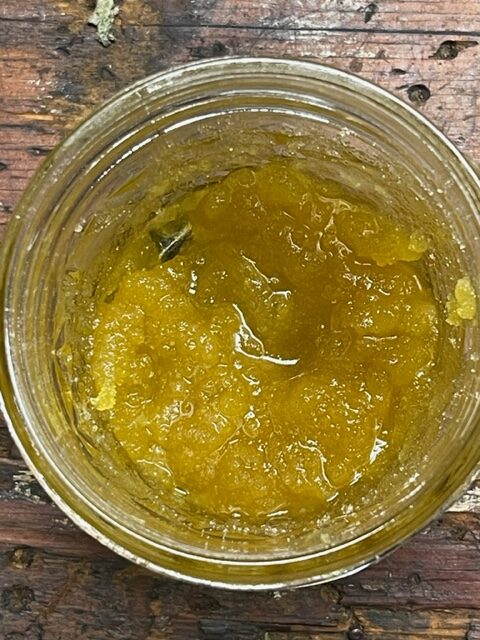Live Resin vs. Live Rosin: Understanding the Key Differences in Cannabis Extracts
Introduction
The cannabis industry has witnessed a surge in innovative extraction methods, resulting in a plethora of cannabis concentrates available to consumers. Two popular extracts, Live Resin and Live Rosin, have gained considerable attention for their potency and unique flavor profiles. This essay aims to explore the fundamental differences between Live Resin and Live Rosin, shedding light on their respective extraction processes, cannabinoid profiles, and overall characteristics.
Live Resin: The Process and Characteristics
Live Resin is a cannabis concentrate renowned for preserving the plant’s natural flavors and aromas due to its unique extraction process. The primary goal of Live Resin extraction is to capture the essence of the living cannabis plant, hence the name “Live Resin.” The process involves harvesting the cannabis plant immediately after it is cut and flash-freezing it to retain its freshness and terpene content.
Once frozen, the cannabis plant material undergoes extraction using a hydrocarbon solvent, typically butane or propane. The cold temperature helps prevent the degradation of volatile compounds, such as terpenes, which are responsible for the distinctive aromas and flavors of different cannabis strains. The solvent strips the cannabinoids and terpenes from the plant material, resulting in a highly concentrated and flavorful Live Resin extract.
One of the key characteristics of Live Resin is its high terpene content. Terpenes are volatile compounds found in cannabis and many other plants, contributing to the plant’s aroma and potential therapeutic effects. Live Resin’s rich terpene profile enhances the overall user experience, providing an entourage effect, where cannabinoids and terpenes work together synergistically to influence the overall effects.
Live Rosin: The Process and Characteristics
Live Rosin is another cannabis concentrate known for its purity and solventless extraction method. Unlike Live Resin, Live Rosin does not involve the use of any hydrocarbon solvents during extraction, making it a preferred choice for those who seek a cleaner and more natural concentrate.
The extraction process for Live Rosin starts with the same premise as Live Resin, utilizing freshly harvested cannabis plant material. However, instead of using solvents, Live Rosin relies on heat and pressure to extract cannabinoids and terpenes from the plant. The process involves pressing the frozen cannabis material between heated plates, causing the trichomes to burst and release their contents.
The heat and pressure applied during Live Rosin extraction can be carefully controlled to retain the delicate terpenes and cannabinoids, resulting in a flavorful and potent extract. The solventless nature of Live Rosin makes it a popular choice for consumers concerned about potential residual solvents in other concentrates.
Differences in Cannabinoid Profiles
The extraction processes of Live Resin and Live Rosin can significantly impact their respective cannabinoid profiles. Live Resin often contains higher levels of THC, as the solvent-based extraction method is more efficient at extracting cannabinoids. Additionally, Live Resin may have a more diverse cannabinoid profile, including various minor cannabinoids like cannabigerol (CBG) and cannabinol (CBN).
On the other hand, Live Rosin may have a slightly lower THC content compared to Live Resin due to the absence of solvents. However, Live Rosin retains a more complete terpene profile, which contributes to its distinct aroma, flavor, and entourage effect. The solventless extraction method allows Live Rosin to showcase the full spectrum of the plant’s natural compounds, making it appealing to cannabis connoisseurs seeking a more authentic experience.
Texture and Consistency
The extraction methods of Live Resin and Live Rosin also influence their texture and consistency. Live Resin typically has a more viscous and sap-like texture, similar to honey. Its consistency makes it suitable for use in vaporizers, dab rigs, and other consumption methods.
In contrast, Live Rosin has a budder-like or wax-like consistency. It is usually more solid than Live Resin, making it easier to handle and manipulate. This texture allows users to enjoy Live Rosin in various ways, such as dabbing, vaporizing, or adding it to flower for an enhanced cannabis experience.
Conclusion
Live Resin and Live Rosin are two distinct cannabis concentrates with unique characteristics and extraction methods. Live Resin captures the essence of the living cannabis plant using hydrocarbon solvents, resulting in a highly flavorful and potent extract. On the other hand, Live Rosin is a solventless concentrate obtained through heat and pressure, preserving the plant’s natural terpene profile.
Both Live Resin and Live Rosin offer consumers a diverse and flavorful cannabis experience, showcasing the versatility of cannabis extraction techniques. As the cannabis industry continues to evolve, these concentrates will undoubtedly remain at the forefront of innovation, providing enthusiasts with exciting options to explore the vast world of cannabis concentrates. Ultimately, personal preferences and desired effects will play a crucial role in determining which concentrate best suits each individual’s needs and preferences.

